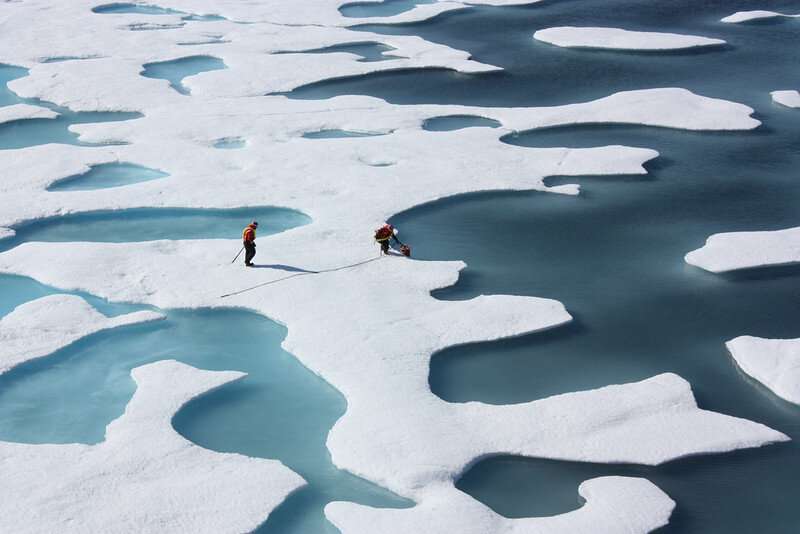New observations from ICESat-2 show remarkable Arctic sea ice thinning in just three years

Over the past two decades, the Arctic has lost about one-third of its winter sea ice volume, largely due to a decline in sea ice that persists over several years, called multiyear ice, according to a new study. The study also found sea ice is likely thinner than previous estimates.
Seasonal sea ice, which melts completely each summer rather than accumulating over years, is replacing thicker, multiyear ice and driving sea ice thinning trends, according to the new research.
Arctic sea ice snow depth is estimated, for the first time, from a combination of lidar (ICESat-2) and radar (CryoSat-2) data. Using these estimates of snow depth and the height of sea ice exposed above water, the study found multiyear Arctic sea ice has lost 16% of its winter volume, or approximately half a meter (about 1.5 feet) of thickness, in the three years since the launch of ICESat-2.
The study was published in the AGU journal Geophysical Research Letters, which publishes short-format, high-impact papers with implications that span the Earth and space sciences.
"We weren't really expecting to see this decline, for the ice to be this much thinner in just three short years," said lead study author Sahra Kacimi, a polar scientist at the California Institute of Technology's Jet Propulsion Laboratory.
Scientists make satellite estimates of sea-ice thickness using snow depth and the height of the floating ice above the sea surface. Snow can weigh ice down, changing how ice floats in the ocean. The new study compared ice thickness using new snow depths from satellite radar and lidar to previous ice thickness and snow depth estimates from climate records. The researchers found using climatology-based estimates of snow depth can result in overestimating sea-ice thickness by up to 20%, or up to 0.2 meters (0.7 feet).
"Arctic snow depth, sea ice thickness and volume are three very challenging measurements to obtain," said Ron Kwok, a polar scientist at the University of Washington's Applied Physics Laboratory who co-authored the new study. "The key takeaway for me is the remarkable loss of Arctic winter sea ice volume—one-third of the winter ice volume lost over just 18 years—that accompanied a widely reported loss of old, thick Arctic sea ice and decline in end-of-summer ice extent."
"This is the first time anyone has several years' worth of data from the difference between lidar and radar data for snow depth," said Robbie Mallett, a polar ice researcher at University College London who was not involved in the study. "It's a really useful update on how ICESat-2 is performing."
The study used an 18-year record of sea-ice observations from ICESat and the newer ICESat-2 and CryoSat-2 satellites to capture monthly changes in Arctic sea-ice thickness and volume, to provide context for sea ice thickness estimates from 2018 to 2021. The 18-year record showed a loss of about 6,000 cubic kilometers of winter ice volume, largely driven by the switch from predominantly multiyear ice to thinner, seasonal sea ice.
Older, multiyear ice tends to be thicker and therefore more resistant to melting. As that "reservoir" of old Arctic sea ice is depleted and seasonal ice becomes the norm, the overall thickness and volume of Arctic sea ice is expected to decline. "Current models predict that by the mid-century we can expect ice-free summers in the Arctic, when the older ice, thick enough to survive the melt season is gone," Kacimi said.
"This is really old ice we're losing at quite a frightening rate," Mallett said.
More information: Sahra Kacimi et al, Arctic snow depth, ice thickness and volume from ICESat‐2 and CryoSat‐2: 2018‐2021, Geophysical Research Letters (2022). DOI: 10.1029/2021GL097448
Journal information: Geophysical Research Letters
Provided by American Geophysical Union





















